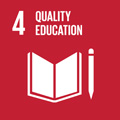- Docente: Elisa Dal Chiele
- Credits: 6
- Language: Italian
- Teaching Mode: Traditional lectures
- Campus: Bologna
- Corso: First cycle degree programme (L) in Humanities (cod. 6601)
-
from Nov 10, 2025 to Dec 18, 2025
Learning outcomes
By the end of the course, the student has achieved an understanding of the basic morphosyntactic structures and vocabulary of the Latin language. He/she has also acquired the following skills: he/she knows (1) how to recognize and describe the main morphosyntactic structures of the Latin language; (2) how to conduct linguistic analysis of simple periods; (3) how to set up preliminary work for comprehension and translation of short Latin texts.
Course contents
The course aims to consolidate knowledge of the basic morphological structures of the Latin language and to provide students with the tools and skills necessary to recognise the main Latin syntactic structures, which are essential for understanding and translating texts. Among the subjects covered in class, particular attention will be given to case syntax and the system of subordinate clauses. The course also aims to promote an adequate knowledge of basic Latin vocabulary, which is equally essential for understanding and translating texts.
Students will be constantly encouraged to participate: theoretical explanation of grammatical subjects by the teacher will be always followed by interactive classroom exercises on the topics covered. Classroom activities will be supplemented and consolidated by individual exercises, which students will complete in the reference manual and online on Virtuale. Attendance at lessons is therefore required.
Students interested in attending the workshop must register by 15 October by sending an email to the teacher responsible for the group they wish to join: Prof. Dal Chiele for Group 1 (elisa.dalchiele3@unibo.it) and Prof. Ricchieri for Group 2 (tommaso.ricchieri@unibo.it).
Once registrations have been collected, the teachers will create the groups. This may involve moving students from one group to another to create numerically homogeneous groups and achieve greater teaching effectiveness.
Both groups will have access to the same space on Virtuale, which will only be visible after registration has closed and the teachers have been notified.
Readings/Bibliography
The reference manual for morphology and syntax is:
- I. Dionigi, L. Morisi, E. Riganti, Il latino. Grammatica ed esercizi, Laterza, Bari 2011; or Verba et res. Morfosintassi e lessico del latino, 2 voll., Laterza, Bari 1999.
N.B.: The purchase of this manual is strongly recommended, as it will be essential for individual study. It will be the reference manual during guided classroom exercises and for the assignment of exercises to be done at home. This manual will also be useful during the preparation of the exams of Lingua and Letteratura latina.
Teaching methods
Interactive lessons, guided classroom exercises, homework assignments with materials provided by the teacher and online exercises available on Virtuale.
Assessment methods
The laboratory issues an idoneità (certificate of proficiency) through a written test. The test will consist of analysing a short Latin text chosen from those covered in class, or one that is otherwise very similar.
Students will be asked to answer seven questions on their understanding of the morphological and syntactic aspects of the short Latin text. The questions are designed to assess students' ability to conduct a guided linguistic analysis of a short text, and will be similar to the exercises carried out during the laboratory.
The exam will last 60 minutes and will be taken in person. No dictionary is required; if the text contains any unfamiliar or difficult words, a glossary will be provided.
The idoneità will be granted if you answer at least four of the seven questions correctly.
- Erasmus students can translate the Latin text into English, French, Spanish or German.
- Students with SLD or temporary or permanent disabilities. It is necessary to contact the relevant University office (https://site.unibo.it/studenti-con-disabilita-e-dsa/en) with ample time in advance: the office will propose some adjustments, which must in any case be submitted 15 days in advance to the teacher, who will assess the appropriateness of these in relation to the teaching objectives.
Teaching tools
Slides, scans, exercises to be done in the reference manual, online exercises available on Virtuale.
Office hours
See the website of Elisa Dal Chiele
SDGs

This teaching activity contributes to the achievement of the Sustainable Development Goals of the UN 2030 Agenda.
